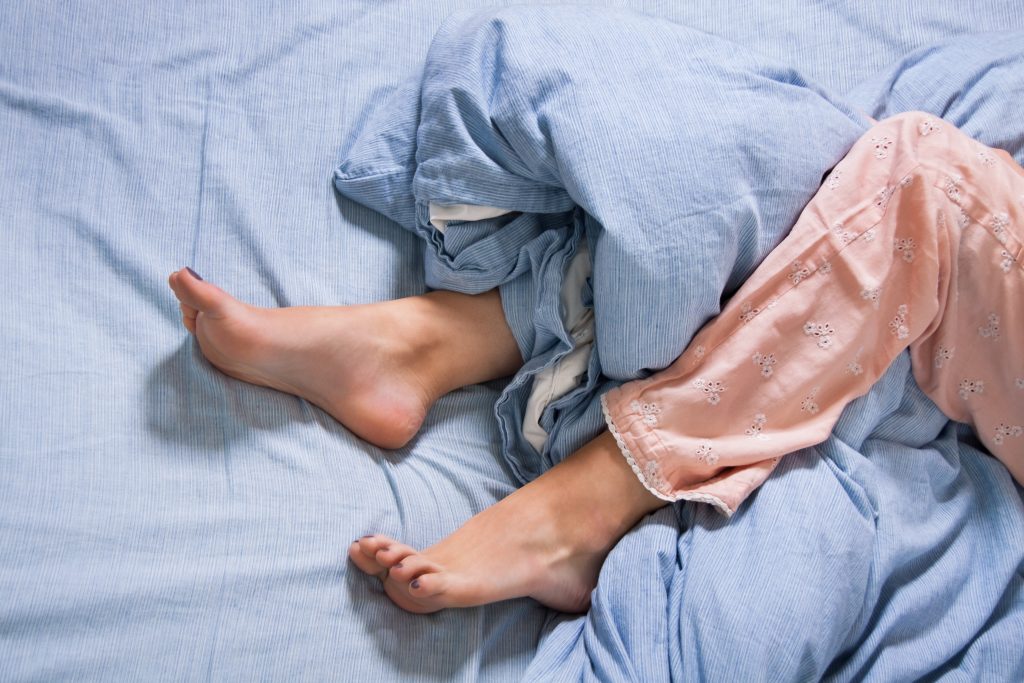-
Mayo Clinic Q and A: Understanding restless legs syndrome
 DEAR MAYO CLINIC: Lately at night, I sometimes have a crawling sensation in my legs and an irresistible urge to move them. It's happened at least five times over the past month. Could this be restless legs syndrome? If so, how is it diagnosed? What can be done if I do have it?
DEAR MAYO CLINIC: Lately at night, I sometimes have a crawling sensation in my legs and an irresistible urge to move them. It's happened at least five times over the past month. Could this be restless legs syndrome? If so, how is it diagnosed? What can be done if I do have it?
ANSWER: The sensations you describe may be caused by restless legs syndrome (RLS), also called Willis-Ekbom disease. The symptoms can range from mildly annoying to incapacitating. A key secondary symptom is difficulty getting good sleep. Combined, these can have a damaging effect on energy, vitality, thinking and mood.
Diagnosing RLS is based on identifying tell-tale symptoms. These include an urge to move the legs along with an uncomfortable sensation in the thighs, calves or feet — or occasionally the arms — that may be described as creeping, jittery, tingling, electric, burning or aching. Sometimes, the urge to move the legs can occur without these sensations. Restless legs syndrome usually causes sensations that begin or worsen during rest or inactivity, such as lying down or sitting, and worsen in the evening or at night. These sensations are typically only relieved by movement, such as walking or stretching, until they go away.
It’s common for people with RLS to have difficulty sleeping or to feel that sleep isn’t restorative. About 80 percent of those with RLS also have periodic limb movements of sleep. This consists of nighttime leg jerking or kicking while asleep that can disturb sleep quality, often without you knowing it.
If you have milder RLS symptoms that occur intermittently and aren’t impacting your life much, you may be able to calm the sensation by massaging your legs, stretching leg muscles, walking or taking a warm bath. To prevent symptoms, keep the mind occupied in the evening, such as with crossword puzzles, conversation, knitting or other activities that may help. Try stopping any afternoon or evening caffeine intake, as this can sometimes contribute to the problem.
If symptoms aren’t manageable on your own, the first step is to test for insufficient iron levels with a blood test called a serum ferritin test. Even serum ferritin measurements that are within the typical normal range may be low enough to contribute to RLS symptoms. If the iron levels are low, iron replacement with a supplement is typically recommended, although intravenous iron replacement may be considered in some cases.
Another early step is having your health care provider or pharmacist look at any prescription or non-prescription drugs or supplements you take to assess whether any of them might be contributing to symptoms.
If none of these changes are enough to relieve your symptoms, your health care provider may prescribe medication to reduce leg restlessness. Several prescription medications — most of which were developed to treat other diseases — may reduce the restlessness in your legs. These include medications that increase dopamine in the brain, opioids, muscle relaxants and sleep medications. It may take several trials for you and your health care provider to find the right medication or combination of medications that works best for you.
Sometimes these drug options aren’t effective, they decline in effectiveness or side effects become intolerable. In these cases, it’s often worthwhile to go back to the basics and thoroughly review iron levels or other factors that may be hampering efforts to control symptoms, such as a sleep disorder or medication. (adapted from Mayo Clinic Health Letter) — Dr. Vichaya Arunthari, Pulmonary and Critical Care Medicine, Mayo Clinic, Jacksonville, Florida
****************************
Related Articles
- Mayo Clinic Minute: Sleep spoilers — tips for a good night’s rest published 11/2/18
- Mayo Clinic Minute: Signs of a sleep disorder published 10/1/18
- Mayo Clinic Minute: Does your child have restless legs syndrome? published 8/10/18







